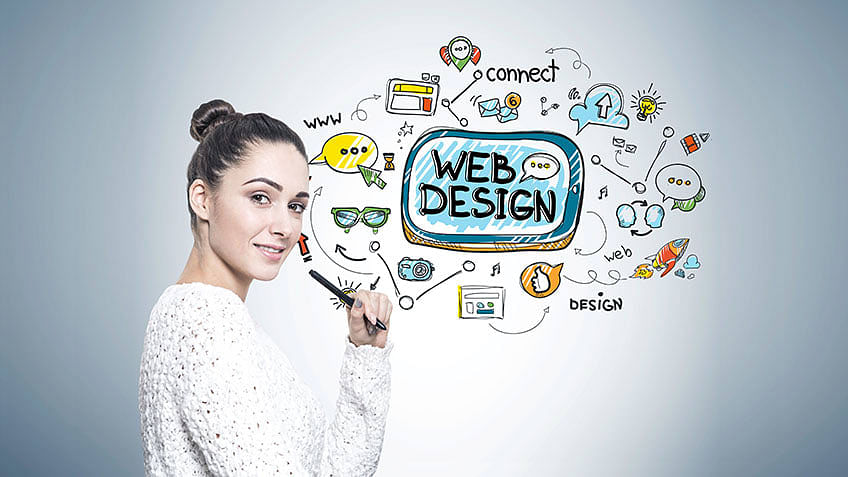Professional Aligned Position Web Design: Custom Websites Tailored to Your Business Needs
Professional Aligned Position Web Design: Custom Websites Tailored to Your Business Needs
Blog Article
The Very Best Kinds of Website Design to Improve Customer Experience and Interaction
In the ever-evolving landscape of digital interaction, the efficiency of Web design substantially influences user experience and engagement. Different design methods, such as minimalist, responsive, and interactive layouts, each offer unique benefits that can cater to diverse customer requirements.
Minimalist Website Design
As digital landscapes end up being increasingly chaotic, minimal Web style has arised as a powerful method to enhancing user experience. This design ideology focuses on simpleness, concentrating on crucial elements while eliminating unneeded disturbances. By utilizing enough white area, uncomplicated navigation, and a limited color combination, minimalist layout promotes quality and routes individual attention to key content.
The core concept of minimalist website design is to develop a smooth interaction for customers. By decreasing cognitive tons, individuals can quickly comprehend info without feeling overwhelmed. This direct strategy not just enhances usability yet also encourages interaction, as site visitors are most likely to explore a site that is aesthetically enticing and easy to browse.
In addition, minimalist style frequently stresses typography and imagery, making use of these elements strategically to share messages properly. This concentrate on important parts can improve brand identification and produce a memorable customer experience. Fundamentally, minimalist website design is not simply a pattern; it is a thoughtful methodology that acknowledges the significance of user-centered design. By removing extraneous aspects, developers can develop a more appealing, effective, and enjoyable Web experience for all individuals.
Responsive Web Style
In today's diverse digital setting, responsive website design has actually ended up being necessary for developing a seamless customer experience across a plethora of tools. As customers gain access to websites on smartphones, desktops, tablet computers, and laptop computers, the capability of a site to adapt its layout and web content to different screen dimensions and resolutions is critical.
Responsive website design uses adaptable grids, photos, and CSS media inquiries to guarantee that Web material is offered efficiently, despite the gadget utilized. This strategy not only enhances the visual allure of a web site yet likewise considerably enhances functionality. Customers are a lot more likely to engage with a website that provides a regular experience, as it removes the stress of needing to zoom in or scroll exceedingly.
By adopting responsive style, services can boost their visibility and get to a wider target market. In summary, responsive Web style is a basic practice that enhances user experience, interaction, and total fulfillment.
Interactive Web Style
Responsive website design prepares for enhancing user experience, but interactive Web design takes this an action better by engaging customers in a more vibrant way - Aligned Position Web Design. By including elements such as computer animations, clickable models, and real-time feedback, interactive Web design astounds customers, attracting them right into a richer browsing experience
This technique not only cultivates interaction but also motivates individuals to explore content proactively instead of passively eating it. Strategies such as gamification, where users earn rewards for completing jobs, can dramatically improve the time spent on a site and boost total contentment. Additionally, interactive functions can simplify intricate details, making it much more digestible and satisfying.

Integrating interactive style aspects can likewise bring about greater conversion rates, as individuals are most likely to engage with a site that proactively entails them. Aligned Position Web Design. Eventually, interactive Web layout transforms customer experiences right into memorable journeys, guaranteeing that visitors return time and once more
Apartment Design
Characterized by its minimalistic technique, flat layout stresses simpleness and capability, stripping away unneeded components and concentrating on essential features. This style ideology prioritizes usability, ensuring that individuals can browse interfaces with ease and effectiveness. By employing a clean aesthetic, level style eliminates the clutter usually discovered in more elaborate styles, thus enhancing individual concentrate on content and performance.
The trademark of level style depends on its usage of strong shades, straightforward typography, and geometric shapes. These components contribute to an aesthetically attractive user interface that is both friendly and modern-day. Additionally, level layout promotes a sense of quality, enabling individuals to discern vital actions and info without disturbance.
Furthermore, flat layout is especially reliable visit this web-site in receptive Web layout, as its simplicity translates well throughout numerous tools and screen sizes. The lack of detailed appearances and slopes decreases filling times, which is critical for preserving user involvement. As electronic landscapes remain to advance, level design remains a pertinent selection for producing user-friendly internet sites that improve overall experience. By focusing on important features, level layout not only fulfills individual needs but additionally encourages smooth interaction, making it a crucial component of reliable Web style methods.
Flexible Web Style
Flexible website design tailors the individual experience by developing numerous fixed layouts tailored to different screen dimensions and tools. Unlike receptive style, which fluidly readjusts a solitary design, flexible style employs distinctive designs for particular breakpoints, making sure optimal discussion on numerous try this site systems. This technique enables developers to concentrate on the distinct attributes of each tool, enhancing use by supplying specifically what users require based on their context.
Among the key benefits of adaptive website design is its capacity to maximize load times and efficiency. By serving customized content and pictures that fit the customer's tool, sites can minimize information use and enhance loading speeds. This is especially beneficial for customers with slower links or minimal information plans.

In addition, adaptive design promotes a much more regulated and constant branding experience. Because developers develop several layouts, they can make sure that the aesthetic components align with the brand's identity across various platforms - Aligned Position Web Design. This causes a natural customer experience, boosting engagement and promoting customer retention
Final Thought
In verdict, the assimilation of minimalist, receptive, and interactive next page Web style principles significantly enhances individual experience and interaction. Minimalist design promotes quality and focus, while receptive style ensures adaptability throughout various gadgets, advertising availability. Interactive design astounds individuals through dynamic aspects, encouraging expedition and customization. Jointly, these style approaches add to the development of user-friendly atmospheres that not just boost satisfaction yet additionally drive greater conversion rates, underscoring their essential relevance in modern Web style techniques.

Minimalist layout promotes quality and focus, while responsive style ensures versatility throughout various gadgets, advertising availability. Jointly, these layout comes close to contribute to the production of user-friendly settings that not only improve contentment but likewise drive greater conversion prices, emphasizing their essential value in modern Web layout strategies.
Report this page